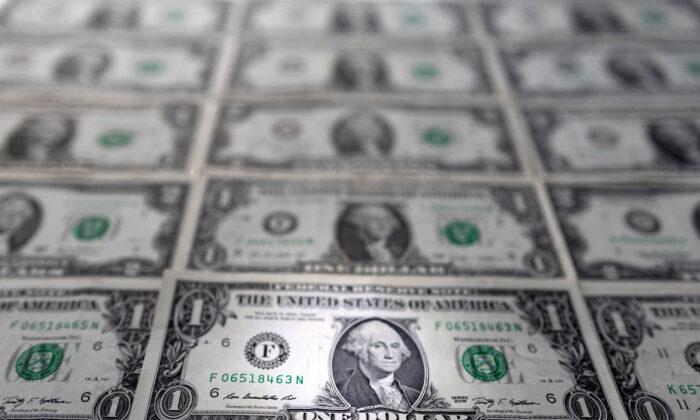LONDON—The U.S. dollar marched to a two-year high on Monday as a wave of risk aversion swept global markets, while the Chinese yuan was set for its biggest three-day losing streak in nearly four years on growing worries of an economic slowdown in China.
With war in Ukraine entering the third month and growing concerns of a China-wide COVID-19 outbreak sparking a rout in Chinese stocks, investors dumped currency market darlings like the Aussie and the offshore Chinese yuan.
Against a basket of its rivals, the dollar gained 0.6 percent to 101.62, a level it last tested in March 2020, and is on track for its biggest daily rise since March 11.
“The dollar will stay supported before the Fed meeting next week and many commodity currencies that have done well this year are now seeing the bar raised,” said Kenneth Broux, a currency strategist at Societe Generale in London.
The Aussie, which was one of the biggest gainers in currencies in the first quarter of 2022 thanks to surging commodity prices, fell widely. It weakened more than 1 percent against the U.S. dollar and fell by a similar margin versus the Swiss franc.
The Norwegian crown also fell more than 1 percent versus the dollar.
BofA Securities strategists said that despite the pick up in currency market volatility, investors were long the Canadian dollar, Aussie, and the euro.
The euro’s tiny gains after French President Emmanuel Macron’s election victory over right rival Marine Le Pen quickly dissipated, with the single currency down 0.8 percent at $1.0729.
Latest positioning data for last week showed hedge funds trimmed their long euro bets.
Hawkish comments by various policymakers last week also raised the risks of aggressive policy tightening by global central banks. Money markets expect the Fed to raise interest rates by a half point at the next two meetings and the European Central Bank to raise interest rates by 25 basis points in July.
China’s yuan fell to a one-year low. Broader currency market volatility gauges ticked higher, with an index rising to its highest levels in more than a month.





